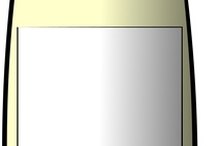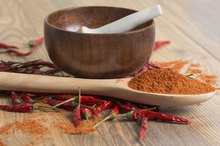What does fact checked mean?
At Healthfully, we strive to deliver objective content that is accurate and up-to-date. Our team periodically reviews articles in order to ensure content quality. The sources cited below consist of evidence from peer-reviewed journals, prominent medical organizations, academic associations, and government data.
The information contained on this site is for informational purposes only, and should not be used as a substitute for the advice of a professional health care provider. Please check with the appropriate physician regarding health questions and concerns. Although we strive to deliver accurate and up-to-date information, no guarantee to that effect is made.
How to Suction Pump Longer Nipples
Longer nipples can make it difficult for your baby to nurse, especially when your baby is premature, according to the La Leche League. If breastfeeding has been a challenge, pumping can help you give your baby the same nutrients and benefits of breastfeeding while offering the ease and comfort of bottle feeding. Longer nipples ca pose a pumping issue as well, but the proper preparation and techniques can make letdown and pumping easier.
Drink plenty of water to stay hydrated, suggests FamilyDoctor.org. When you're hydrated, your milk production stays high and is easier to harvest via a suction pump.
How to Increase a Breastfed Baby's Suck
Learn More
Massage your breasts for a few moments before pumping. Dr. William Sears, associate clinical professor of pediatrics at the University of California, Irvine, School of Medicine, suggests beginning at the armpit and making small circles with your fingertip down into the breast tissue. Move slowly in a diagonal pattern toward the areola. This will help stimulate milk production so you spend less time pumping. This is especially beneficial if you have long nipples and you find pumping to be painful.
Center your nipple in the mouth of the cone or funnel opening of the breast pump 3. In some ways, longer nipples may be an advantage because you'll need less suction to pull the nipple into the neck of the pump for better harvesting. Ensure that your nipple stays center, without touching the sides, which could be painful.
What Are the Treatments for Breast Ligament Pain?
Learn More
Adjust the suction to your comfort level. Always begin pumping on a lower suction setting, and work up to a higher setting as your comfort allows. Starting on the highest setting can cause pain and a poor milk output if you're stressed out and in pain. Most breast pumps have a small dial that you can adjust when you feel that you're comfortable enough for more suction or less suction if you're in pain.
Pump as long as you're comfortable and producing milk, recommends the U.S. .Food and Drug Administration. Pumping when your breast is clearly empty, or pumping while in pain will not increase your output and can cause your long nipples to feel sore for your next pumping.
Rub an emollient cream on your nipples when you're done pumping. Longer nipples may be more sensitive and left feeling sore and stretched. An emollient cream can help soothe and soften the skin for more comfortable pumping sessions.
Related Articles
References
- AskDrSears.com: Nineteen Tips for Better Pumping
- FamilyDoctor.org: Breastfeeding: How to Pump and Store Your Breast Milk
- FDA: Using a Breast Pump
- McKay M, Coad R. A brother and sister with breast cancer, BRCA2 mutations and bilateral supernumerary nipples. Annals of Translational Medicine. 2017. 5(5):106. doi:10.21037/atm.2017.03.02
- Kliegman R, Stanton B, St. Geme J, and Schor N. Nelson Textbook of Pediatrics. 20th ed. Philadelphia, PA: Elsevier; 2016.
- McKay M, Coad R. A brother and sister with breast cancer, BRCA2 mutations and bilateral supernumerary nipples. Annals of Translational Medicine. 2017. 5(5):106. doi:10.21037/atm.2017.03.02
- National Institutes of Health. Supernumerary Nipple.
Writer Bio
Kay Ireland specializes in health, fitness and lifestyle topics. She is a support worker in the neonatal intensive care and antepartum units of her local hospital and recently became a certified group fitness instructor.









